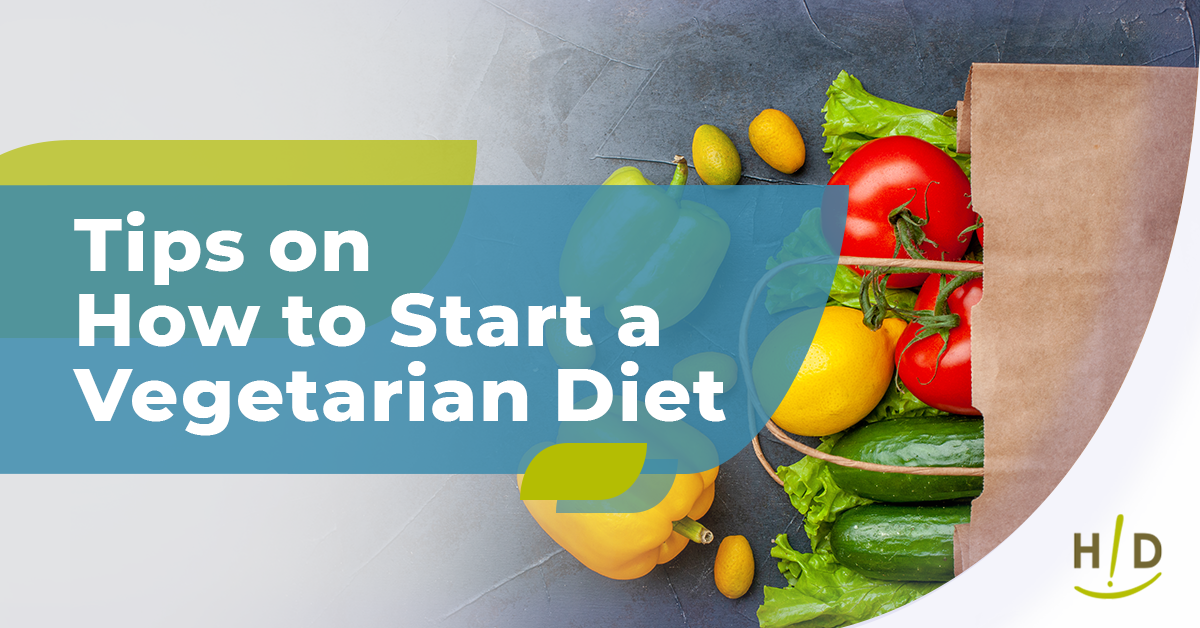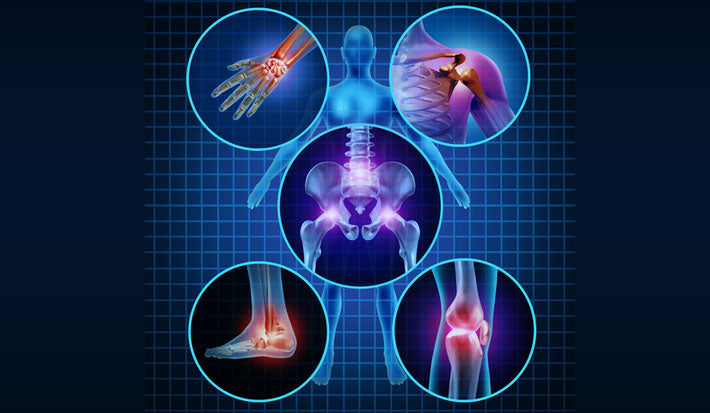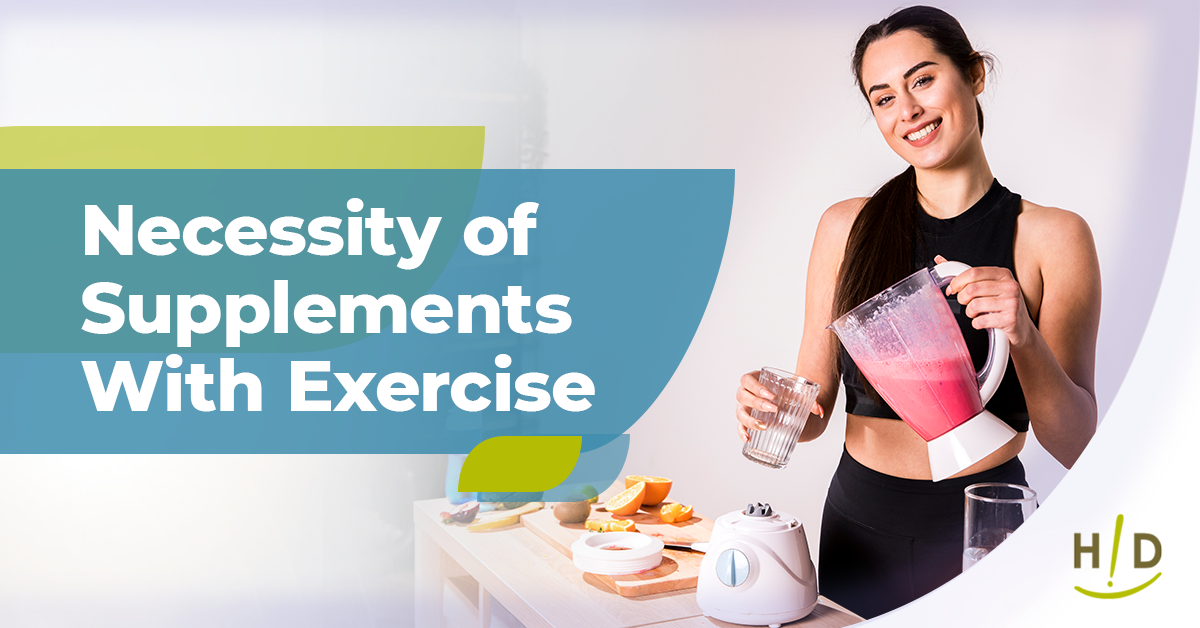Congratulations on your decision to start a vegetarian diet! If you’re like so many people who’ve made the change, the decision to go meatless did not come easily. Within American culture, meat has become the centerpiece of almost every meal, which can make it easy to overlook just how delicious vegetables are and see the many health benefits a vegetarian diet has to offer.
The good news is there’s no set way to switch over to plant-based eating, and there are many approaches you can take. As far as health benefits go, a vegetarian diet just can’t be beat, which you’ll soon realize along the way. Here are a few tips on how to start a vegetarian diet, along with where to find step-by-step guidelines to make the transition go as smoothly as possible.
 When making the switch to a vegetarian diet, getting enough vegetables into your daily menu can be a challenge. While the U. S. Department of Agriculture recommends one to two cups of fruit and one to three cups of vegetables, you’ll want to aim for a minimum of 10 total servings a day. In this way, not only are the body’s nutritional needs being met, but you’ll be feeding the natural self-healing systems that promote continued health and longevity.
Juicing offers a quick and easy way to add more fruits and vegetables into your daily meal plan. Juicing extracts the core nutrients from fruits and vegetables in liquid form, making it easier for the body to absorb them. Since it takes 12 to 16 ounces of most vegetables and fruits to make an 8 ounce glass of juice, juicing can deliver mega-nutrients in an efficient manner.
When making the switch to a vegetarian diet, getting enough vegetables into your daily menu can be a challenge. While the U. S. Department of Agriculture recommends one to two cups of fruit and one to three cups of vegetables, you’ll want to aim for a minimum of 10 total servings a day. In this way, not only are the body’s nutritional needs being met, but you’ll be feeding the natural self-healing systems that promote continued health and longevity.
Juicing offers a quick and easy way to add more fruits and vegetables into your daily meal plan. Juicing extracts the core nutrients from fruits and vegetables in liquid form, making it easier for the body to absorb them. Since it takes 12 to 16 ounces of most vegetables and fruits to make an 8 ounce glass of juice, juicing can deliver mega-nutrients in an efficient manner.
 When you start a vegetarian diet, you’re opening yourself up to a whole new world of taste sensations. The wide variety of vegetable choices, the different spices, and new-found sauces offer as tasty a selection of entrees as any meat-based menu. After trying different types of foods and recipes, you’ll develop a whole new taste palate that craves nutritious and healthy foods. Besides all this, it won’t be long before you start to notice the health benefits, such as having more energy, feeling better, and thinking clearly, that come with eating a plant-based diet.
When you start a vegetarian diet, you’re opening yourself up to a whole new world of taste sensations. The wide variety of vegetable choices, the different spices, and new-found sauces offer as tasty a selection of entrees as any meat-based menu. After trying different types of foods and recipes, you’ll develop a whole new taste palate that craves nutritious and healthy foods. Besides all this, it won’t be long before you start to notice the health benefits, such as having more energy, feeling better, and thinking clearly, that come with eating a plant-based diet.
Going Cold Turkey on Meats vs. the Gradual Approach - Which Works Better?
Going vegetarian may seem like a cut and dried course of action, but it really doesn’t have to be. While some people may prefer to go cold turkey and jump right in, there’s nothing wrong with taking the gradual approach when starting a vegetarian diet. Going meatless is a major lifestyle change that comes with incredible health benefits. You can start out by adding more fruits and vegetables to each meal. Substituting unhealthy entrees, like macaroni and cheese, with a vegetable dish is another way to go. By easing into a plant-based diet, you can still make definite progress without feeling like you’re missing out.Some Tips on How to Start a Vegetarian Diet
Planning in Advance Is Half the Battle
After years of planning meals around the meat entree, it’s not unusual to feel lost when faced with having to make full-course, plant-based meals. Planning in advance makes vegetarian meal planning easier to do. Since what’s in the cupboards is what gets eaten, planning begins with the grocery list. Determine which vegetables and fruits you already like to eat and fill your refrigerator and cupboards with a variety of plant-based foods. It also helps to have a menu guideline and recipes handy. This makes the selection process that much easier. Hallelujah Diet offers a “Get Started” guide that shows how to plan your meals in practical ways, along with what foods to add to your diet and what foods to avoid. The Get Started guide also includes helpful nutritional information that talks about the various health benefits different foods have to offer.Add Juicing to Your Daily Meal Plan
 When making the switch to a vegetarian diet, getting enough vegetables into your daily menu can be a challenge. While the U. S. Department of Agriculture recommends one to two cups of fruit and one to three cups of vegetables, you’ll want to aim for a minimum of 10 total servings a day. In this way, not only are the body’s nutritional needs being met, but you’ll be feeding the natural self-healing systems that promote continued health and longevity.
Juicing offers a quick and easy way to add more fruits and vegetables into your daily meal plan. Juicing extracts the core nutrients from fruits and vegetables in liquid form, making it easier for the body to absorb them. Since it takes 12 to 16 ounces of most vegetables and fruits to make an 8 ounce glass of juice, juicing can deliver mega-nutrients in an efficient manner.
When making the switch to a vegetarian diet, getting enough vegetables into your daily menu can be a challenge. While the U. S. Department of Agriculture recommends one to two cups of fruit and one to three cups of vegetables, you’ll want to aim for a minimum of 10 total servings a day. In this way, not only are the body’s nutritional needs being met, but you’ll be feeding the natural self-healing systems that promote continued health and longevity.
Juicing offers a quick and easy way to add more fruits and vegetables into your daily meal plan. Juicing extracts the core nutrients from fruits and vegetables in liquid form, making it easier for the body to absorb them. Since it takes 12 to 16 ounces of most vegetables and fruits to make an 8 ounce glass of juice, juicing can deliver mega-nutrients in an efficient manner.
Work Toward a Healthy Balance of Nutrients
As with any diet plan, it’s important to work toward including a healthy balance of nutrients in your meal planning. A plant-based diet made up of whole grains, legumes, fruits, and vegetables provides ample nutrition for the body’s needs. The trick to keeping meals balanced is to eat a variety of different foods. If you’re concerned at all about getting enough protein, rest assured, there’s no shortage of proteins in a vegetarian diet. Lentils, beans, nut butters, almonds, and many more options offer plenty of protein to meet the body’s needs. The nutrients you’ll want to make sure are present in your meal plans are iron, magnesium, zinc and vitamin B12. As mentioned before, having a step-by-step guideline to follow will take much of the guesswork out of this task.Stay Open to New Taste Sensations
 When you start a vegetarian diet, you’re opening yourself up to a whole new world of taste sensations. The wide variety of vegetable choices, the different spices, and new-found sauces offer as tasty a selection of entrees as any meat-based menu. After trying different types of foods and recipes, you’ll develop a whole new taste palate that craves nutritious and healthy foods. Besides all this, it won’t be long before you start to notice the health benefits, such as having more energy, feeling better, and thinking clearly, that come with eating a plant-based diet.
When you start a vegetarian diet, you’re opening yourself up to a whole new world of taste sensations. The wide variety of vegetable choices, the different spices, and new-found sauces offer as tasty a selection of entrees as any meat-based menu. After trying different types of foods and recipes, you’ll develop a whole new taste palate that craves nutritious and healthy foods. Besides all this, it won’t be long before you start to notice the health benefits, such as having more energy, feeling better, and thinking clearly, that come with eating a plant-based diet.





